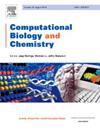基于多重生物信息学预测多发性骨髓瘤与股骨头坏死合并症的潜在机制
IF 2.6
4区 生物学
Q2 BIOLOGY
引用次数: 0
摘要
本研究旨在利用多种生物信息学工具阐明多发性骨髓瘤(MM)和股骨头坏死(ONFH)并发症的潜在机制。方法从GEO数据库中检索MM和ONFH的高通量芯片数据集,然后分别进行预处理。我们应用加权基因共表达网络分析(WGCNA)在MM数据集中构建共表达网络,进一步确定与MM临床特征相关的模块和基因。利用通路和网络分析工具对潜在的合并基因进行了富集和分析,并利用Cytoscape初步筛选了MM和ONFH合并症的关键基因。利用两个疾病相关数据集对基因表达能力和性能进行了验证,我们还评估了两种疾病免疫微环境的差异和一致性。通过蛋白质-蛋白质相互作用(PPI)网络进一步确定了关键基因,并在验证队列中验证了这些基因的性能,其接收者操作特征曲线(ROC)面积超过了 0.8。免疫微环境分析强调了浆细胞浸润与疾病并发症的相关性,为未来的疗法提出了潜在的免疫靶点。已发现的关键基因,如 RPS19、RPL35、RPL24、RPL36 和 EIF3G,以及浆细胞浸润,可能是这两种疾病发病的核心机制。这项研究为进一步研究这些疾病的靶向治疗提供了启示和参考。本文章由计算机程序翻译,如有差异,请以英文原文为准。
Potential mechanisms for predicting comorbidity between multiple myeloma and femoral head necrosis based on multiple bioinformatics
Objective
This study aims to utilize multiple bioinformatics tools to elucidate the potential mechanisms underlying the comorbidity of Multiple Myeloma (MM) and Osteonecrosis of the Femoral Head (ONFH).
Method
High-throughput microarray datasets for MM and ONFH were retrieved from the GEO database, followed by separate preprocessing. We applied Weighted Gene Co-expression Network Analysis (WGCNA) to construct co-expression networks within the MM datasets, further identifying modules and genes associated with MM clinical characteristics. Potential comorbid genes were enriched and analyzed using pathway and network analysis tools, and key genes for MM and ONFH comorbidity were preliminarily screened using Cytoscape. The gene expression capabilities and performance were validated using two disease-related datasets, and we evaluated the differences and consistencies in the immune microenvironment between the two diseases.
Results
Our screening identified 418 immune-related comorbid genes, showing consistent biological processes in ribosome synthesis, particularly protein synthesis across both diseases. Key genes were further identified through Protein-Protein Interaction (PPI) networks, and their performance was validated in a validation cohort, with Receiver Operating Characteristic (ROC) curve areas exceeding 0.8. The immune microenvironment analysis highlighted consistent plasma cell infiltration correlated with disease comorbidity, suggesting potential immune targets for future therapies.
Conclusion
MM and ONFH share common pathogenic genes that mediate changes in signaling pathways and immune cell dynamics, potentially influencing the comorbidity and progression of these diseases. Key genes identified, such as RPS19, RPL35, RPL24, RPL36, and EIF3G, along with plasma cell infiltration, may serve as central mechanisms in the development of both diseases. This study offers insights and references for further research into targeted treatments for these conditions.
求助全文
通过发布文献求助,成功后即可免费获取论文全文。
去求助
来源期刊

Computational Biology and Chemistry
生物-计算机:跨学科应用
CiteScore
6.10
自引率
3.20%
发文量
142
审稿时长
24 days
期刊介绍:
Computational Biology and Chemistry publishes original research papers and review articles in all areas of computational life sciences. High quality research contributions with a major computational component in the areas of nucleic acid and protein sequence research, molecular evolution, molecular genetics (functional genomics and proteomics), theory and practice of either biology-specific or chemical-biology-specific modeling, and structural biology of nucleic acids and proteins are particularly welcome. Exceptionally high quality research work in bioinformatics, systems biology, ecology, computational pharmacology, metabolism, biomedical engineering, epidemiology, and statistical genetics will also be considered.
Given their inherent uncertainty, protein modeling and molecular docking studies should be thoroughly validated. In the absence of experimental results for validation, the use of molecular dynamics simulations along with detailed free energy calculations, for example, should be used as complementary techniques to support the major conclusions. Submissions of premature modeling exercises without additional biological insights will not be considered.
Review articles will generally be commissioned by the editors and should not be submitted to the journal without explicit invitation. However prospective authors are welcome to send a brief (one to three pages) synopsis, which will be evaluated by the editors.
 求助内容:
求助内容: 应助结果提醒方式:
应助结果提醒方式:


